These introductory climate courses are a great way to explore the impacts of a changing climate and solutions to the climate crisis. Many of these courses have no prerequisites and are open to all majors.
Register for any of these courses using the MyPlan Academic Planner. Not a UW student? Learn how to get started on your degree.
Climate, Justice, and Energy Solutions (ATM S 100)
Explore scientific climate solutions
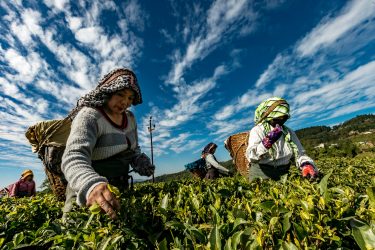 Presents visions of the future when the climate crisis is solved and describes paths towards reaching these goals. Examines solutions including building a resilient society with clean energy, sustainable agriculture, climate justice, and a just transition for workers.
Presents visions of the future when the climate crisis is solved and describes paths towards reaching these goals. Examines solutions including building a resilient society with clean energy, sustainable agriculture, climate justice, and a just transition for workers.
- Winter, Spring, Summer
- 5 credits (NSc, SSc, DIV)
- Prerequisites: None
- Faculty: Dargan Frierson & Judy Twedt
Global Warming: Understanding the Issues (ATM S 111)
Understand the science and causes of global warming
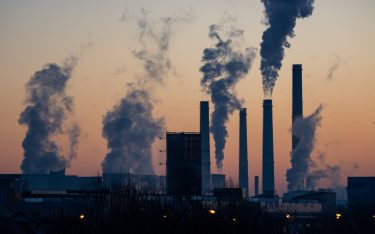 Presents a broad overview of the science of global warming. Includes the causes, evidence, and societal and environmental impacts from the last century. Recounts future climate projections and societal decisions that influence greenhouse gas emission scenarios and our ability to adapt to climate change. Presents ways to identify disinformation versus correct science. Includes both online and in-person components.
Presents a broad overview of the science of global warming. Includes the causes, evidence, and societal and environmental impacts from the last century. Recounts future climate projections and societal decisions that influence greenhouse gas emission scenarios and our ability to adapt to climate change. Presents ways to identify disinformation versus correct science. Includes both online and in-person components.
- Autumn, Winter, Spring, Summer
- 5 credits (NSc, SSc)
- Prerequisites: None
- Faculty: Kat Huybers
Climate and Climate Change (ATM S 211)
Explore processes that drive the climate system
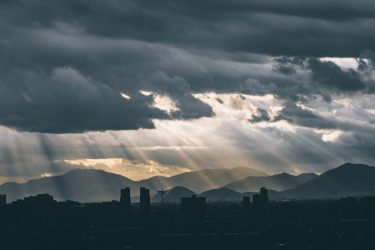 Provides a deeper look into the science of global warming. Examines the nature of the global climate system, factors influencing climate—including interactions among the atmosphere, oceans, solid earth, and biosphere — and the stability and sensitivity of the climate system. Intended for non-ATMS majors.
Provides a deeper look into the science of global warming. Examines the nature of the global climate system, factors influencing climate—including interactions among the atmosphere, oceans, solid earth, and biosphere — and the stability and sensitivity of the climate system. Intended for non-ATMS majors.
- Autumn, Winter, Spring
- 5 credits (NSc, SSc)
- Prerequisites: None
- Faculty: Kyle Armour & David Battisti
Introduction to Environmental Studies (ENVIR 100)
Learn about the human dimensions of climate change
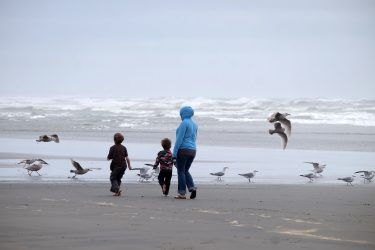 Introduces environmental studies through an interdisciplinary examination of the ethical, political, social, and scientific dimensions of current and historical environmental issues. Integrates knowledge from different disciplines and applies insights and methods to actual environmental problems and situations at scales from local to global.
Introduces environmental studies through an interdisciplinary examination of the ethical, political, social, and scientific dimensions of current and historical environmental issues. Integrates knowledge from different disciplines and applies insights and methods to actual environmental problems and situations at scales from local to global.
- Autumn, Winter, Spring, Summer
- 5 credits (DIV, SSc, NSc)
- Prerequisites: None
- Faculty: Tim Billo, Kristi Straus, Yen-Chu Weng, & Eli Wheat
Climate Governance: How Individuals, Communities, NGOs, Firms, and
Governments Can Solve the Climate Crisis (SMEA/ENVIR 201)
Explore societal climate solutions
 Examines climate change, its causes and impacts (on ecosystems, water availability, extreme weather, communities, health, and food) globally, nationally, and locally. Surveys its solutions (mitigation, adaptation, migration, and just transition), actors that implement them (governments, firms, NGOs, activists, communities, individuals) and approaches they use (regulation, markets, planning, innovation, social movements, behavioral change).
Examines climate change, its causes and impacts (on ecosystems, water availability, extreme weather, communities, health, and food) globally, nationally, and locally. Surveys its solutions (mitigation, adaptation, migration, and just transition), actors that implement them (governments, firms, NGOs, activists, communities, individuals) and approaches they use (regulation, markets, planning, innovation, social movements, behavioral change).
- Spring
- 5 credits (NSc, SSc, DIV)
- Prerequisites: None
- Faculty: Nives Dolšak
Earth’s Climate System (ESS 201)
Understand climate systems and processes
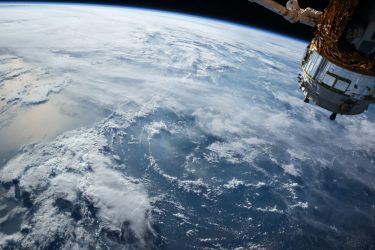 A deeper look into Earth’s dynamic environment, ideal for students studying in STEM fields and/or comfortable with advanced math. This course covers global energy balance and the interplay of chemical, physical, and biological processes shaping the Earth’s surface and climate. Emphasis on quantitative methods for measuring, evaluating, and understanding contemporary changes relative to the last several thousand years.
A deeper look into Earth’s dynamic environment, ideal for students studying in STEM fields and/or comfortable with advanced math. This course covers global energy balance and the interplay of chemical, physical, and biological processes shaping the Earth’s surface and climate. Emphasis on quantitative methods for measuring, evaluating, and understanding contemporary changes relative to the last several thousand years.
- Autumn
- 3 credits (NSc)
- Prerequisites: MATH124 or MATH134 or QSCI 291
- Faculty: Gerard Roe
Glaciers and Global Change (ESS 203)
Learn about the impacts of climate change on glaciers
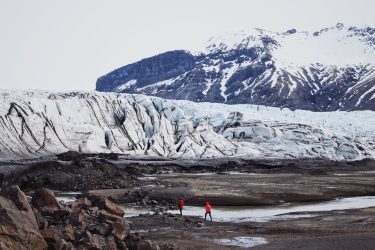 Explores how glaciers record climate change and human activities through bubbles of ancient air and trace impurities in the ice. Also reviews glaciers’ impact on societies through sea-level, coastlines, water supplies, and transportation routes.
Explores how glaciers record climate change and human activities through bubbles of ancient air and trace impurities in the ice. Also reviews glaciers’ impact on societies through sea-level, coastlines, water supplies, and transportation routes.
- Winter
- 5 credits (NSc, SSc)
- Prerequisites: None
- Faculty: Edwin Waddington

